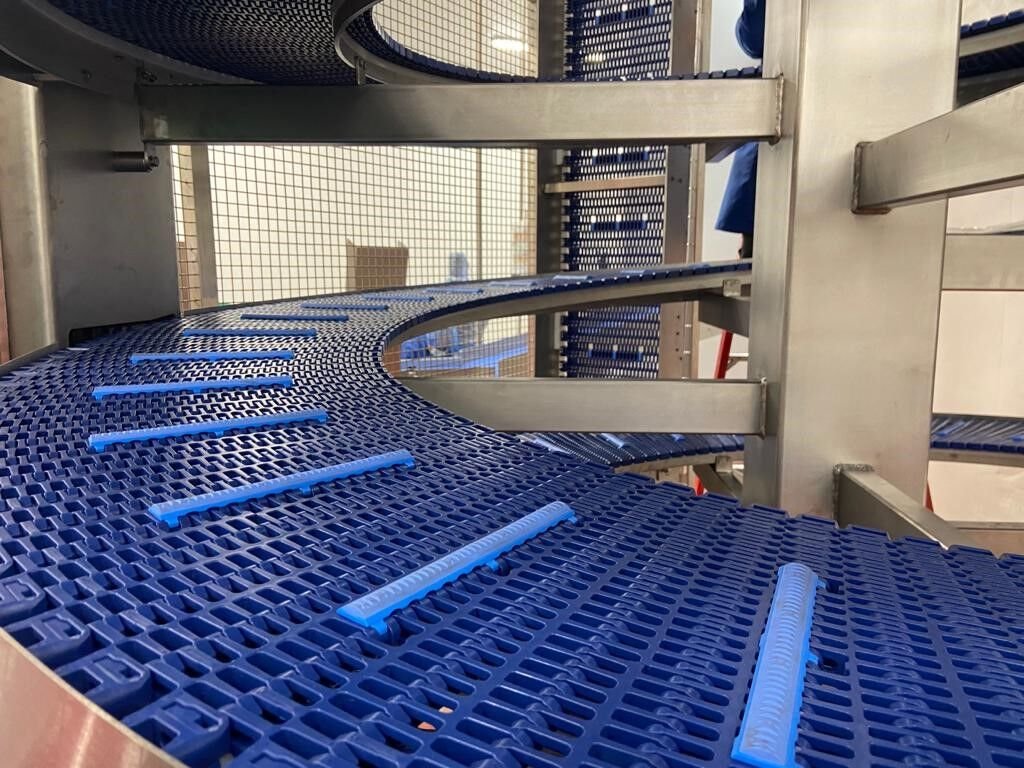The Core of Food Industry Conveyor Systems
Food Safety and Hygiene
At the heart of every food industry conveyor system is the commitment to food safety and hygiene. The choice of materials is critical. Utilising food-grade materials that are corrosion-resistant, easy to clean, and non-reactive with food is imperative. The conveyor system’s design should facilitate effortless cleaning, ensuring that every nook and cranny can be reached and sanitised effectively. Regular maintenance and the use of food-safe lubricants are crucial to prevent contamination and ensure the system’s longevity. So you should consider the following in your Food Industry Conveyor system.
Materials
Use food-grade materials that are resistant to corrosion, easy to clean, and non-reactive with food.
Sanitisation
Design for easy and thorough cleaning with minimal disassembly. Minimize flat surfaces and crevices where debris can accumulate.
Lubrication
Choose food-safe lubricants and ensure proper lubrication points to prevent contamination.
Contamination Prevention
The design should incorporate measures to prevent cross-contamination. This involves careful consideration of the layout to segregate raw, cooked, and ready-to-eat foods effectively. Selecting appropriate conveyor belt materials that suit the food type is pivotal in minimising the risk of contamination.
Here are some areas you should think about for Contamination prevention in your conveyor systems
Separation
Design the conveyor layout to keep raw, cooked, and ready-to-eat foods separate to prevent cross-contamination.
Belt Selection
Choose conveyor belts that are appropriate for the food type. Some foods may require specific belt materials to prevent contamination.
Product Integrity
Gentle handling is a paramount consideration. Delicate food products, such as fragile produce or intricate pastries, must traverse the conveyor system without sustaining damage. Proper tracking mechanisms and well-aligned belts are essential to prevent spills and maintain product integrity.
Gentle Handling
Design the conveyor system to minimise impact and damage to delicate food products.
Tracking
Ensure the conveyor belts maintain proper alignment to prevent spills or product damage.
Variable Product Sizes and Shapes
Conveyor systems should accommodate the diverse range of products that flow through them. Adjustable side guides are invaluable in ensuring that different product sizes and shapes can navigate the system smoothly, without jamming or skewing.
Adjustable Guides
Incorporate adjustable side guides to accommodate different product sizes without jamming or skewing.
Capacity and Throughput
Sizing the conveyor system correctly is critical to ensuring optimal throughput. As the cornerstone of logistics automation, the conveyor system must be designed to handle the peak production volumes efficiently. Identifying potential bottlenecks and designing to mitigate them ensures a consistent and efficient flow.
Sizing
Size the conveyor appropriately for the expected throughput, considering peak production times.
Bottlenecks
Identify potential bottlenecks and design to mitigate them to maintain efficient flow.
Environmental Conditions
The environment in which you food production or processing operation is operating in is a crucial consideration for the success of
Temperature
Consider temperature control requirements for both the conveyor system and the food products. Some foods may require cooling or heating during transit.
Humidity
Design to prevent condensation in areas where moisture could be an issue.


